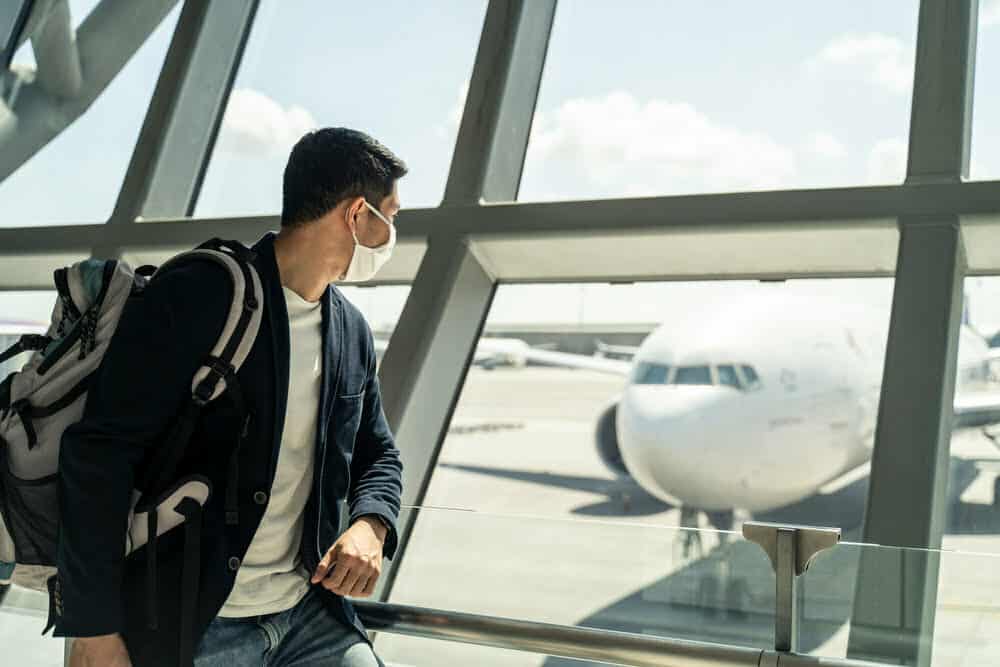In January this yr, a number of European international locations banned fabric face masks in an try to stem the unfold of extra transmissible strains of the coronavirus.
Citizens and guests needed to put on single-use surgical-grade FFP1 masks or the extra protecting FFP2 filtering facepiece respirators or fabric masks that meet the identical necessities blocking a minimal of 90% of particles in all public settings together with retailers. Homemade masks have been banned.
Cloth masks supply inadequate outflowing safety when in comparison with any type of medical-grade mark, which is why physicians and different healthcare staff put on them round sufferers and when in public.
On February 1, Lufthansa launched a stricter onboard masks coverage. The European provider stopped accepting fabric masks; subsequently, all passengers on Lufthansa flights are now sporting surgical masks or FFP2 masks.
To introduce stricter onboard guidelines, LATAM Airlines Group not too long ago banned a sure sort of non-surgical masks, in addition to a number of clothes gadgets from all its home and worldwide flights. The South American airline is following worldwide protocols to make sure extra passenger security amid the COVID-19 pandemic.
Starting Aug. 16, Finnair, the air provider recognized for connecting flights between Europe and Asia, would require all passengers on board to put on surgical masks, the airline mentioned, becoming a member of Lufthansa and Air France in prohibiting fabric face coverings on flights.
Why the ban on fabric and valved masks?
Thereâs at present no extra scientific debate concerning the significance of sporting a masks to forestall COVID-19 infections. While a canopy isn’t an alternative to social distancing, they are a software to gradual the present pandemic unfold. Nevertheless, not each masks works the identical method.
U.S. Airlines have as soon as once more moved the goalpost in relation to face masks and mouth coverings, banning the usage of these masks that function a vent/valve citing the newest CDC suggestions.
Centers for Disease Control and Prevention (CDC) not too long ago modified its pointers to say vented masks don’t assist stop the unfold of COVID-19 inflicting airways to ban one of these face masking.
American Airlines is the newest provider that has banned the usage of such masks after Alaska, Delta, Frontier, JetBlue, Southwest, Spirit and United have already finished so.
The ever-changing insurance policies are complicated airline passengers and common individuals who arenât even travelling as popping out with such information greater than half a yr into the Covid-19 disaster doesnât precisely instil confidence in authorities after individuals have been donning these masks for months with out anybody voicing concern.
In the US, the CDC doesn’t advocate the usage of the next masks:
- Masks that don’t match correctly, both as a result of they’ve giant gaps, are too free or too tight.
- Masks are produced from supplies that are onerous to breathe by way of, equivalent to plastic or leather-based.
- Wearing a shawl or a ski masks.
- Masks with exhalation valves or vents. The CDC doesn’t advocate utilizing masks with exhalation valves or vents as a result of the outlet within the materials could permit respiratory droplets to flee and attain others.
- Masks are produced from fabric that’s loosely woven or knitted.
- Masks with one layer.
While fabric masks could also be higher than any safety in any respect, they arenât ample safety in opposition to the brand new coronavirus variants.
A Duke University research launched in the course of the summer season discovered that fabric masks together with knitted masks and folded bandanas didnât supply a lot safety and additional discovered that gaiter masks improve the transmission of the wearerâs respiratory droplets.
The aviation trade has been totally advocating the protection of travelling. Despite rising numbers of COVID-19 circumstances worldwide, airways state that the chance of an infection on board an plane is near zero.
Nevertheless, to revive the passengerâs confidence, the airways are taking extra cleansing and security measures throughout the board.

